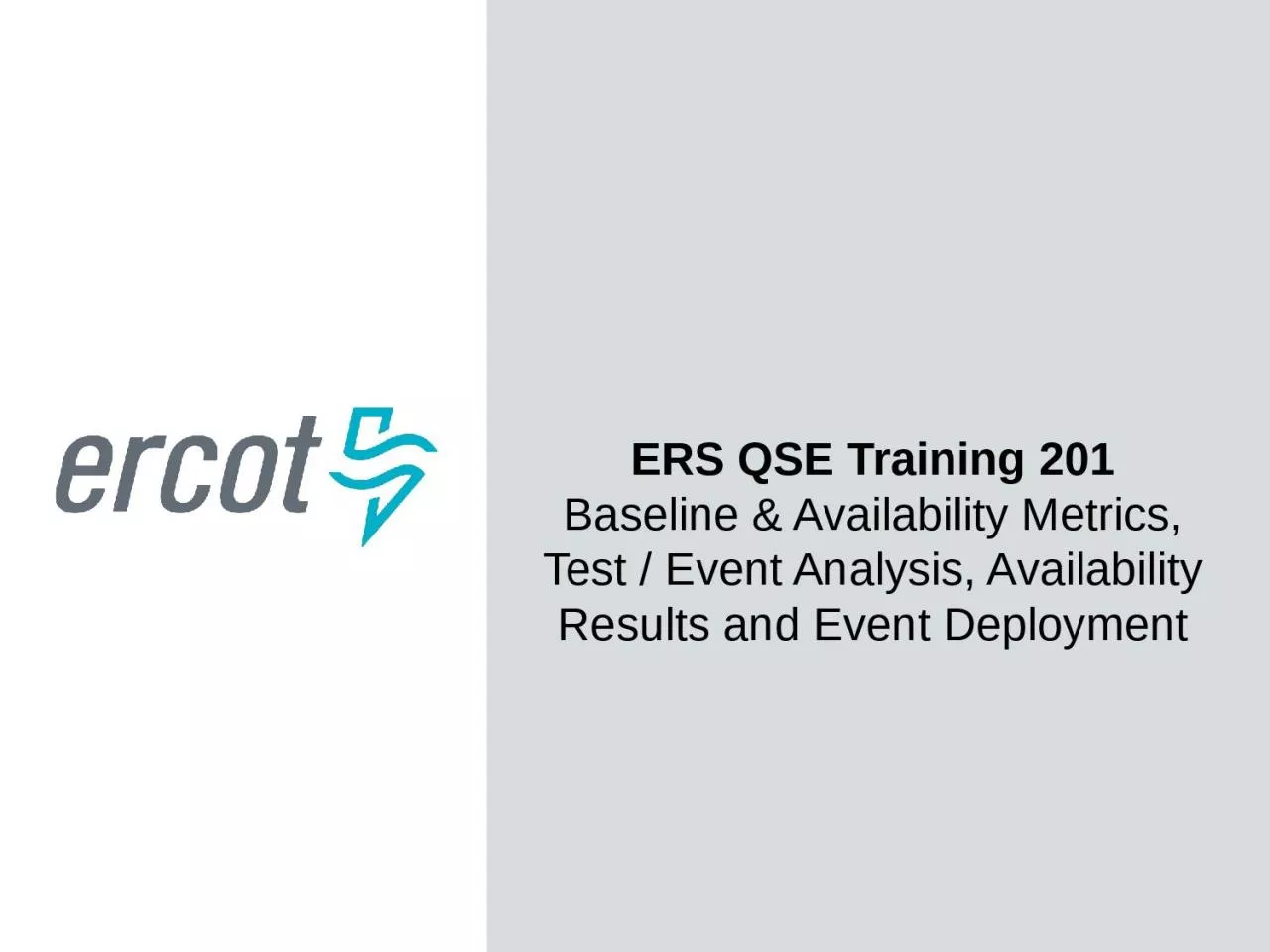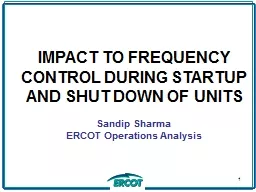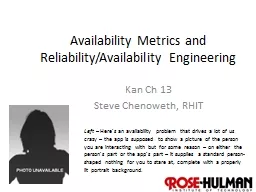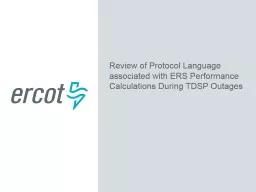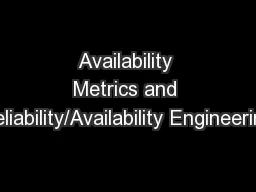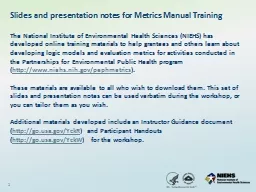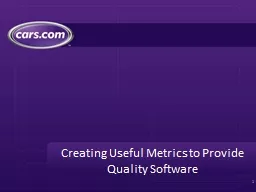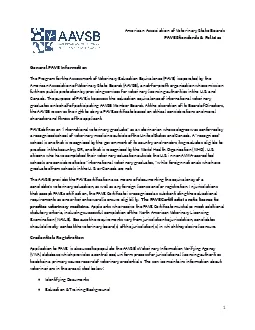PPT-ERS QSE Training 201 Baseline & Availability Metrics, Test / Event Analysis, Availability
Author : willow | Published Date : 2024-01-13
Outline Default Baseline Types ERID Availability and Baseline Metrics Resource Level Test Event Metrics Standard Contract Term SCT QSE Level Availability Results
Presentation Embed Code
Download Presentation
Download Presentation The PPT/PDF document "ERS QSE Training 201 Baseline & Avai..." is the property of its rightful owner. Permission is granted to download and print the materials on this website for personal, non-commercial use only, and to display it on your personal computer provided you do not modify the materials and that you retain all copyright notices contained in the materials. By downloading content from our website, you accept the terms of this agreement.
ERS QSE Training 201 Baseline & Availability Metrics, Test / Event Analysis, Availability: Transcript
Download Rules Of Document
"ERS QSE Training 201 Baseline & Availability Metrics, Test / Event Analysis, Availability"The content belongs to its owner. You may download and print it for personal use, without modification, and keep all copyright notices. By downloading, you agree to these terms.
Related Documents

